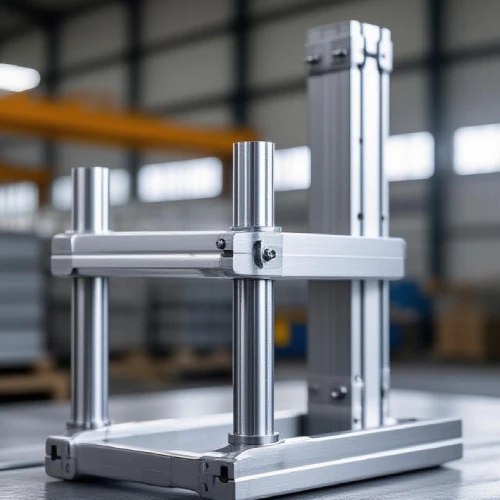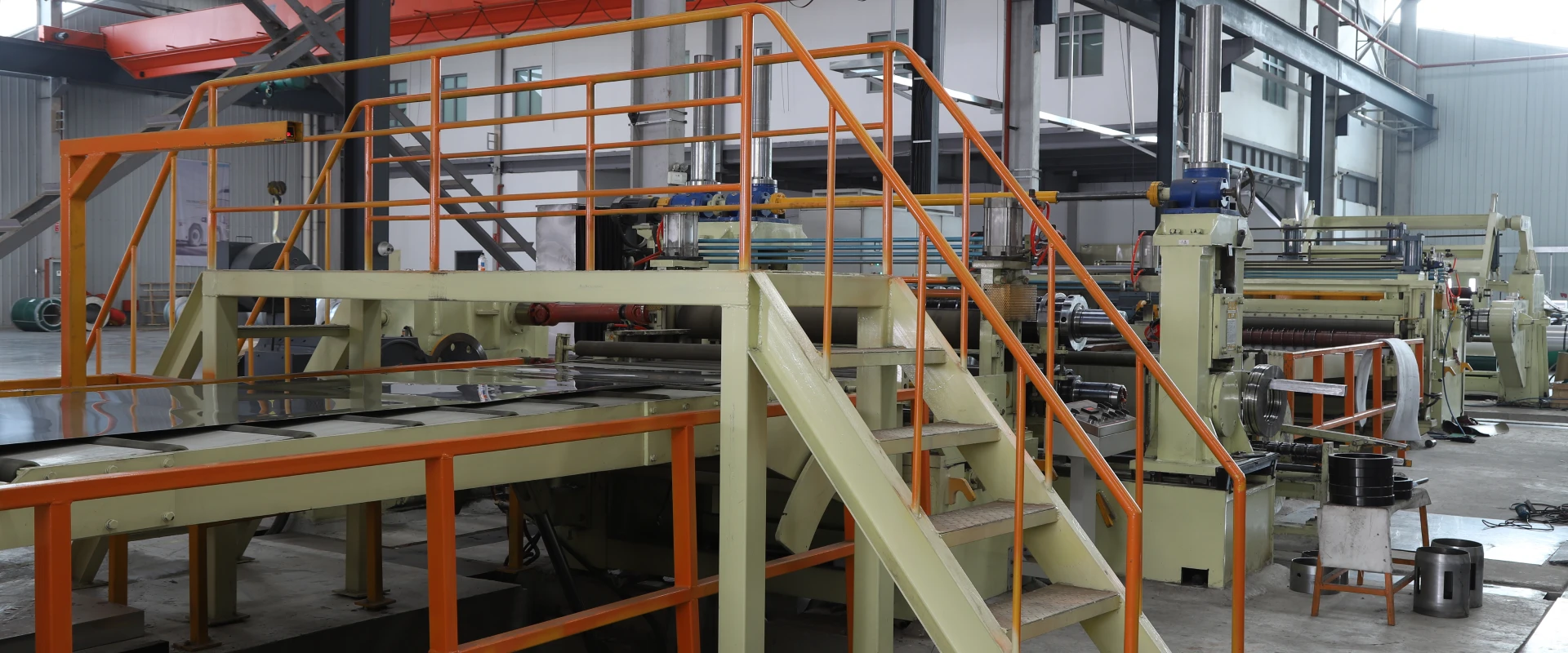Biocompatibility Testing of Medical Titanium Alloy I - Beam in Orthopedic Surgery Navigation Stents
In the field of orthopedic surgery, precision and safety are of utmost importance. Orthopedic surgery navigation stents play a crucial role in guiding surgeons during complex procedures, ensuring accurate placement of implants and minimizing damage to surrounding tissues. Medical titanium alloy I - beams are increasingly being used in the construction of these navigation stents due to their favorable properties. However, before these materials can be widely used in the human body, rigorous biocompatibility testing is essential. Biocompatibility refers to the ability of a material to perform with an appropriate host response in a specific application. For medical titanium alloy I - beams in orthopedic surgery navigation stents, this means ensuring that the material does not cause any adverse effects when in contact with human tissues and fluids.

Significance of Biocompatibility Testing for Medical Titanium Alloy I - Beams in Orthopedic Surgery Navigation Stents
Patient Safety
The primary reason for biocompatibility testing is to safeguard patient safety. Since orthopedic surgery navigation stents are in direct contact with human tissues during surgery and may remain in the body for an extended period in some cases, any potential toxicity or allergenicity of the material could have serious consequences for the patient. For example, if the titanium alloy I - beam releases harmful metal ions, it could lead to inflammation, tissue damage, or even systemic toxicity. By conducting comprehensive biocompatibility tests, we can identify and eliminate such risks, ensuring that patients are not exposed to potentially harmful materials during their orthopedic procedures.
Ensuring Implant Success
Good biocompatibility is also crucial for the long - term success of orthopedic implants. A biocompatible material promotes cell adhesion, proliferation, and tissue integration. In the case of orthopedic surgery navigation stents made of titanium alloy I - beams, if the material is well - tolerated by the body, it will allow for better integration with the surrounding bone and soft tissues. This integration is essential for the proper functioning of the navigation stent and the overall success of the orthopedic procedure. For instance, in spinal surgery, a navigation stent that is biocompatible will be more likely to support the growth of new bone tissue around it, providing stability and promoting healing.
Meeting Regulatory Requirements
Regulatory bodies around the world have strict requirements regarding the biocompatibility of medical devices. Before a medical titanium alloy I - beam can be used in orthopedic surgery navigation stents, it must pass a series of biocompatibility tests to demonstrate its safety and suitability for use in the human body. These regulations are in place to protect patients and maintain the integrity of the medical device industry. Compliance with these requirements is not only a legal obligation but also a mark of quality and reliability for medical device manufacturers.
Common Biocompatibility Testing Methods for Medical Titanium Alloy I - Beams
In Vitro Tests
Cell Culture Tests: One of the most common in vitro biocompatibility tests involves culturing cells on the surface of the titanium alloy I - beam or in contact with extracts from the material. Human osteoblasts, for example, are often used in orthopedic - related biocompatibility studies. The cells are observed for their ability to adhere, spread, and proliferate on the material surface. If the cells show normal growth and function, it is an indication that the material is biocompatible. Additionally, the release of cytokines and other signaling molecules by the cells can be measured. An abnormal increase in pro - inflammatory cytokines may suggest that the material is causing an adverse reaction.
Cytotoxicity Tests: These tests are designed to determine whether the titanium alloy I - beam or its extracts are toxic to cells. The most widely used cytotoxicity test is the MTT (3 - (4.5 - dimethylthiazol - 2 - yl) - 2.5 - diphenyltetrazolium bromide) assay. In this test, cells are exposed to the material or its extracts, and then the MTT reagent is added. Living cells convert the MTT into a purple formazan product, and the amount of formazan produced can be measured spectrophotometrically. A significant decrease in formazan production compared to a control group indicates cytotoxicity.
In Vivo Tests
Animal Models: Animal models are often used to evaluate the biocompatibility of medical titanium alloy I - beams in a more complex and realistic environment. For example, in a rabbit model, the titanium alloy I - beam can be implanted into the bone or soft tissue. After a certain period, the animals are sacrificed, and the tissues around the implant are examined histologically. The presence of inflammation, tissue necrosis, or abnormal tissue reactions can be assessed. Additionally, the integration of the implant with the surrounding tissue can be evaluated. In some cases, blood tests may also be performed on the animals to check for any systemic effects of the implant, such as changes in liver or kidney function.
Clinical Trials: Although clinical trials are the final step in the evaluation of a medical device's biocompatibility, they are also the most important. In clinical trials, the orthopedic surgery navigation stents made of titanium alloy I - beams are used in a small group of patients under strict medical supervision. The patients are closely monitored for any adverse reactions, such as pain, swelling, or infection at the implant site. Long - term follow - up is also crucial to detect any late - onset complications related to the biocompatibility of the material.
Factors Affecting the Biocompatibility of Medical Titanium Alloy I - Beams
Chemical Composition
The chemical composition of the titanium alloy I - beam is a major factor affecting its biocompatibility. Pure titanium is known for its excellent biocompatibility, but alloying elements are often added to improve its mechanical properties. For example, elements like aluminum and vanadium are commonly added to titanium to form Ti - 6Al - 4V alloy, which is widely used in orthopedics. However, the release of these alloying elements, especially vanadium, in the body has been a concern. Some studies have suggested that excessive vanadium release could potentially cause toxicity. Therefore, the development of new titanium alloys with more biocompatible alloying elements, such as niobium, zirconium, and molybdenum, is an area of active research.
Surface Properties
The surface properties of the titanium alloy I - beam can also significantly impact its biocompatibility. A smooth surface may reduce the risk of cell adhesion and bacterial colonization, while a rough surface can promote cell attachment and tissue integration. Surface treatments, such as sandblasting, acid etching, or anodization, can be used to modify the surface roughness and topography of the titanium alloy. Additionally, the presence of a passive oxide layer on the surface of the titanium alloy is crucial for its biocompatibility. This oxide layer, mainly composed of titanium dioxide, acts as a barrier, preventing the release of metal ions into the body and providing a surface that is more favorable for cell adhesion.
Manufacturing Process
The manufacturing process of the titanium alloy I - beam can introduce impurities or affect its microstructure, which in turn can influence its biocompatibility. For example, during the melting and casting process, if the temperature and time are not properly controlled, it can lead to the formation of defects or inhomogeneous microstructures. These defects may increase the susceptibility of the material to corrosion, potentially leading to the release of harmful metal ions. On the other hand, advanced manufacturing techniques, such as additive manufacturing (3D printing), can allow for the creation of complex geometries with controlled porosity, which can enhance tissue integration and biocompatibility.
Case Studies of Biocompatibility Testing for Medical Titanium Alloy I - Beams in Orthopedic Surgery Navigation Stents
A Successful Case in Spinal Surgery
In a recent study, a medical device company developed an orthopedic surgery navigation stent for spinal surgery using a new type of titanium alloy I - beam. In vitro cell culture tests showed that human osteoblasts adhered well to the surface of the titanium alloy and exhibited normal proliferation rates. The cytotoxicity tests indicated no significant toxicity. In vivo animal studies in rabbits demonstrated good integration of the navigation stent with the spinal tissue, with minimal inflammation and a high degree of bone ingrowth around the implant. Clinical trials involving a small group of patients showed similar results, with no reported adverse reactions related to the biocompatibility of the stent during the follow - up period. This successful biocompatibility testing led to the approval of the navigation stent for wider use in spinal surgery.
A Case of Improvement in Hip Replacement Surgery
Another case involved a traditional titanium alloy I - beam used in hip replacement surgery navigation stents. Initial biocompatibility testing revealed a slight release of vanadium ions, which raised concerns. To address this issue, the manufacturer modified the surface of the titanium alloy I - beam using a special coating process. The coated titanium alloy I - beam was then retested. In vitro tests showed a significant reduction in the release of vanadium ions, and cell culture tests indicated improved cell compatibility. In vivo animal studies confirmed the enhanced biocompatibility, with better tissue integration and reduced inflammation around the implant. This improvement in biocompatibility through surface modification allowed for the continued use and improvement of the navigation stent in hip replacement surgeries.
Conclusion
Biocompatibility testing of medical titanium alloy I - beams in orthopedic surgery navigation stents is a complex and multi - faceted process that is essential for ensuring patient safety and the success of orthopedic procedures. Through a combination of in vitro and in vivo tests, we can evaluate the biocompatibility of these materials and identify any potential issues. Factors such as chemical composition, surface properties, and manufacturing processes all play important roles in determining the biocompatibility of medical titanium alloy I - beams. By understanding these factors and conducting thorough biocompatibility testing, we can develop and improve orthopedic surgery navigation stents that are not only mechanically suitable but also highly biocompatible, ultimately leading to better outcomes for patients undergoing orthopedic surgeries.

